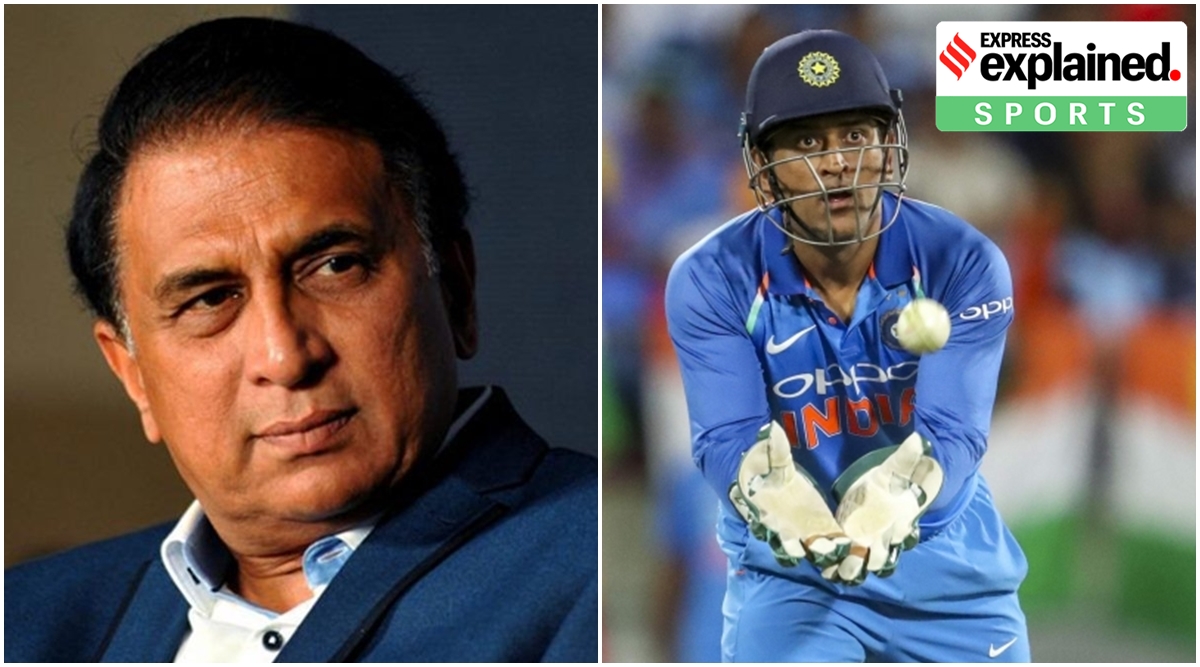The man who occupied the seat on which the ball landed that night, is learnt to have preserved both the ball and the ticket to the game. The Mumbai Cricket Association hopes to get the ball for its museum, and mark the seat in the stadium for posterity.
It started with the Mumbai Cricket Association (MCA) trying to locate the seat at the Wankhede Stadium where M S Dhoni’s World Cup-winning six landed on April 2, 2011. Following a long-standing ‘cricket stadium’ tradition, MCA wanted to enshrine the seat and keep Dhoni’s legacy alive.
Once MCA intentions were made public, batting legend Sunil Gavaskar got in touch with them. In a mail, he wrote that he knew the person — whose identity is still a secret — who hadn’t just preserved the World Cup ticket but also the ball that was part of one of Indian cricket’s most memorable moments.
So how did the chase for the seat begin?
On August 16, 2020, the day after Dhoni announced his retirement, MCA Apex Council member Ajinkya Naik came up with the idea of honouring the retired star by earmarking the seat where his World Cup-winning six landed. He was inspired by the way Auckland had similarly feted the New Zealand all-rounder Grant Elliott, who had helped his team win the 2015 World Cup semi-final with a memorable six.
Where is the seat?
That spot has now been identified as seat number 210 in the MCA Pavilion, L Block. It’s a ground-level stand with the seat close to the fence, and only metres away from the famous staircase taken by the home Indian team, including the iconic last walk of Sachin Tendulkar.
How did Gavaskar come into the picture?
Having read about MCA’s plans to honour Dhoni in this fashion in The Indian Express, Sunil Gavaskar recalled that it was a friend’s friend who had been occupying that seat on that day, and was, in fact, the lucky possessor of the ball that Dhoni had hit for that iconic six. While the name is not yet public, it is learnt that the dream-catcher as it were, resides outside of India, and has safely preserved both the Cup final ticket and the ball.
Also Explained | MS Dhoni’s farewell song ‘main pal do pal ka shayar’
How did Gavaskar help MCA?
Gavaskar wrote to Ajinkya Naik informing him that he could help MCA locate the ball that was lost in the ecstatic celebrations from that historic night, and that the spectator who caught the ball was an acquaintance of his (Gavaskar’s) friend. “Gavaskar informed Ajinkya that his friend knows the person who was at that spot, and even has the ball with him,” an MCA member said.
What are the MCA’s plans now?
It is expected that the MCA may request Gavaskar to help get in touch with the spectator. The cricket association, through Naik, a school cricketer himself who now owns a consultancy firm, will then officially request to procure the ball for its planned museum. The Museum Committee will try to meet the person as soon as it is possible.
Don’t miss from Explained | How the UAE, with virtually no sportspersons, became global sports hub
“As an act of gratitude and tribute to his (Dhoni’s) immense contribution to Indian cricket, the MCA can devote a permanent seat on his name at the pavilion where his famous World Cup-winning six had landed,” read Naik’s letter, accessed by The Indian Express. It is learnt that the seat will be replaced with a brand new one with a plaquette on it.
? Express Explained is now on Telegram. Click here to join our channel (@ieexplained) and stay updated with the latest
Is this a novel way to honour cricketers?
Naming a particular seat, and not an entire stand, after a player is a novel idea in India, though not an alien concept abroad.
Simon O’Donnell’s 122-metre six in a First Class match at the Melbourne Cricket Ground in 1993 has been commemorated with the seat where the ball landed being painted yellow.
Similarly, in 2018, at the Etihad Stadium in Melbourne, Big Bash League franchise Melbourne Renegade honoured their former player Brad Hodge by painting a third-tier seat red, where Hodge’s 96-metre six landed in what was his last match as a player.
And of course, in Auckland, New Zealand, a plaque was placed on a seat where Grant Elliot hit a six that secured the country’s first appearance in the final of a World Cup, back in 2015.
Dhoni, whose title-winning shot off Sri Lankan pacer Nuwan Kulasekara’s bowling, could now join that elite list.
? The Indian Express is now on Telegram. Click here to join our channel (@indianexpress) and stay updated with the latest headlines
For all the latest Explained News, download Indian Express App.
Source: Read Full Article


